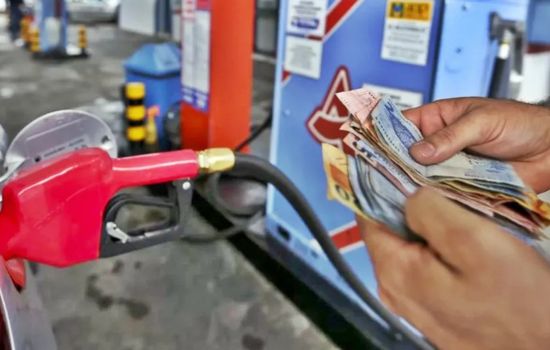In a world where fuel prices are constantly rising and environmental concerns are growing every day, Choosing a vehicle with good gas mileage becomes a key decision. However, there are still cars designed to offer power, luxury, or special capabilities that completely sacrifice efficiency. In this extensive article, we detail the 10 cars that consume the most gasoline, exploring not only their technical consumption, but also their characteristics, advantages, disadvantages, environmental implications, context of use and the profile of the user they are aimed at.
Why do some cars consume so much gasoline?
A vehicle's energy efficiency depends on multiple factors beyond engine size. These include:
- Cylinder capacity: The larger the cylinder capacity, the greater the combustion capacity and power… but also the greater the expense.
- Weight: Large or armored vehicles can exceed 3 tons.
- All-wheel drive: Ideal for difficult terrain, but increases engine strain.
- Design: Square SUVs, raised pickup trucks, or sports cars with large air intakes offer more wind resistance.
- On-board technology: Multimedia systems, multi-zone climate control, active suspension, it all adds up.
- Driving conditions: City, mountain, climate, altitude, fuel quality.
- Driving style:The way you accelerate and brake directly affects fuel efficiency.
Now, let's move on to the ranking of the most expensive cars on the global market, expanding on the key information for each model.
1. Bugatti Chiron Super Sport 300+
- Urban consumption: 3.9 km/l
- Engine: 8.0-liter quad-turbo W16
- Power: 1,600 horses
- Maximum speed: More than 480 km/h
- Limited production: Less than 50 units
This model isn't designed for everyday use. It's a masterpiece of engineering, built for extreme speed. Its monstrous engine and all-wheel drive make it an unparalleled fuel guzzler. Every outing on the road is an event.
2. Lamborghini Aventador SVJ
- Urban consumption: 4.1 km/l
- Engine: 6.5-liter V12
- Maximum speed: 350 km/h
- Acceleration: 0 to 100 km/h in 2.8 seconds
- Base price: More than $500,000
It's the epitome of the Italian supercar. Built for track and exhibition, its extreme aerodynamic design and naturally aspirated engine deliver a unique sound and experience, at the cost of exorbitant fuel consumption.
3. Ferrari 812 Superfast
- Urban consumption: 4.3 km/l
- Engine: 6.5-liter V12
- Power: 800 horses
- Technology: Rear-wheel steering, active aerodynamics
Its name reflects its performance. While surprisingly comfortable for a V12, its efficiency is well below average. The 812 is one of the last naturally aspirated Ferraris.
4. Rolls-Royce Phantom
- Urban consumption: 5.1 km/l
- Engine: 6.75-liter twin-turbo V12
- Weight: More than 2,600 kg
- Inside: Handmade, with more than 400 hours of craftsmanship
A symbol of supreme luxury, the Phantom represents the best of British manufacturing. Designed to be chauffeur-driven, its comfort rivals that of a hotel suite. Fuel consumption is irrelevant to its target audience.
5. Bentley Mulsanne Speed
- Urban consumption: 5.4 km/l
- Engine: 6.75-liter twin-turbo V8
- Torque: More than 1,100 Nm
- Design: Classic and robust, without compromises in luxury
It was Bentley's flagship for years. Its air suspension and refined interior offer a unique experience, although fuel efficiency is conspicuously lacking.
6. Dodge Challenger SRT Hellcat Redeye
- Urban consumption: 5.8 km/l
- Engine: 6.2-liter supercharged HEMI V8
- Power: 797 horsepower (and versions exceeding 800)
- Traction: Rear
A brutal machine that prioritizes acceleration and engine roar. It appeals to enthusiasts seeking pure adrenaline. However, it's impractical outside the United States.
7. Cadillac Escalade V
- Urban consumption: 6.0 km/l
- Engine: 6.2 liter supercharged V8
- Length: 5.7 meters
- Ability: Up to 8 people in total luxury
The SUV of American executives. Despite its size and weight, it offers good acceleration and plenty of comfort. Its fuel consumption makes it unviable in markets where fuel is expensive.
8. Toyota Land Cruiser V8 (200 Series)
- Urban consumption: 6.3 km/l
- Engine: 4.5-liter V8 (diesel or gasoline)
- Common use: NGOs, rural areas, diplomatic missions
- Reliability: Legendary
Its low fuel consumption is acceptable on rural roads. In the city, its off-road capabilities are unnecessary, and its size makes maneuvering difficult.
9. Range Rover SV Autobiography
- Urban consumption: 6.2 km/l
- Engine: 5.0-liter supercharged V8
- Technology: Air suspension, massage on all seats, 360° cameras
A British rolling lounge. Aimed at senior executives, it features wood trim, built-in refrigerators, and multiple touchscreens. Elegance comes at a price in fuel.
10. Mercedes-Benz G 65 AMG
- Urban consumption: 5.5 km/l
- Engine: 6.0-liter twin-turbo V12
- History: Derived from a 1970s military design
Although it's no longer produced, it's still sought after by collectors. It's powerful, but impractical. Its urban consumption reflects its military, not urban, origins.
Environmental impact of these models
Each of these vehicles emits significant amounts of CO2 per kilometer traveled. While a modern compact car emits between 90 and 120 g/km of CO2, these models easily exceed 300 g/km. Furthermore:
- They contribute to climate change
- Increased dependence on fossil fuels
- Noise pollution increases in urban areas
Why are these cars still being made?
- Demand for luxury and exclusivity
- Brand advertising and marketing
- Markets with cheap gasoline (e.g., USA, Middle East)
- Collecting and car culture
Are there more efficient and luxurious alternatives?
Yes. Today, it's possible to enjoy luxury without sacrificing the environment. Examples include:
- Mercedes EQS: The German brand's most luxurious electric sedan
- Tesla Model S Plaid: Speed and electric autonomy
- BMW i7: Comfort, technology and zero emissions
- Range Rover PHEV: Plug-in hybrid version of the classic SUV
See also:
- Quick and easy vehicle price check with your smartphone
- Optimize your phone and improve its performance in a few steps
- Easily and accurately monitor your glucose levels with an app.
- Get the perfect fit for your shoes from the comfort of your home.
- The best tool to identify and value your rare coins
Conclusion: Is it worth owning one of these vehicles?
The cars that consume the most gasoline They offer an unparalleled experience in terms of power, luxury, and history. But in practice, their high maintenance costs, environmental impact, and low efficiency mean their use is increasingly limited to specific contexts.
The future is electric and efficient, but the roar of a V12 still holds a special place in the hearts of enthusiasts.







